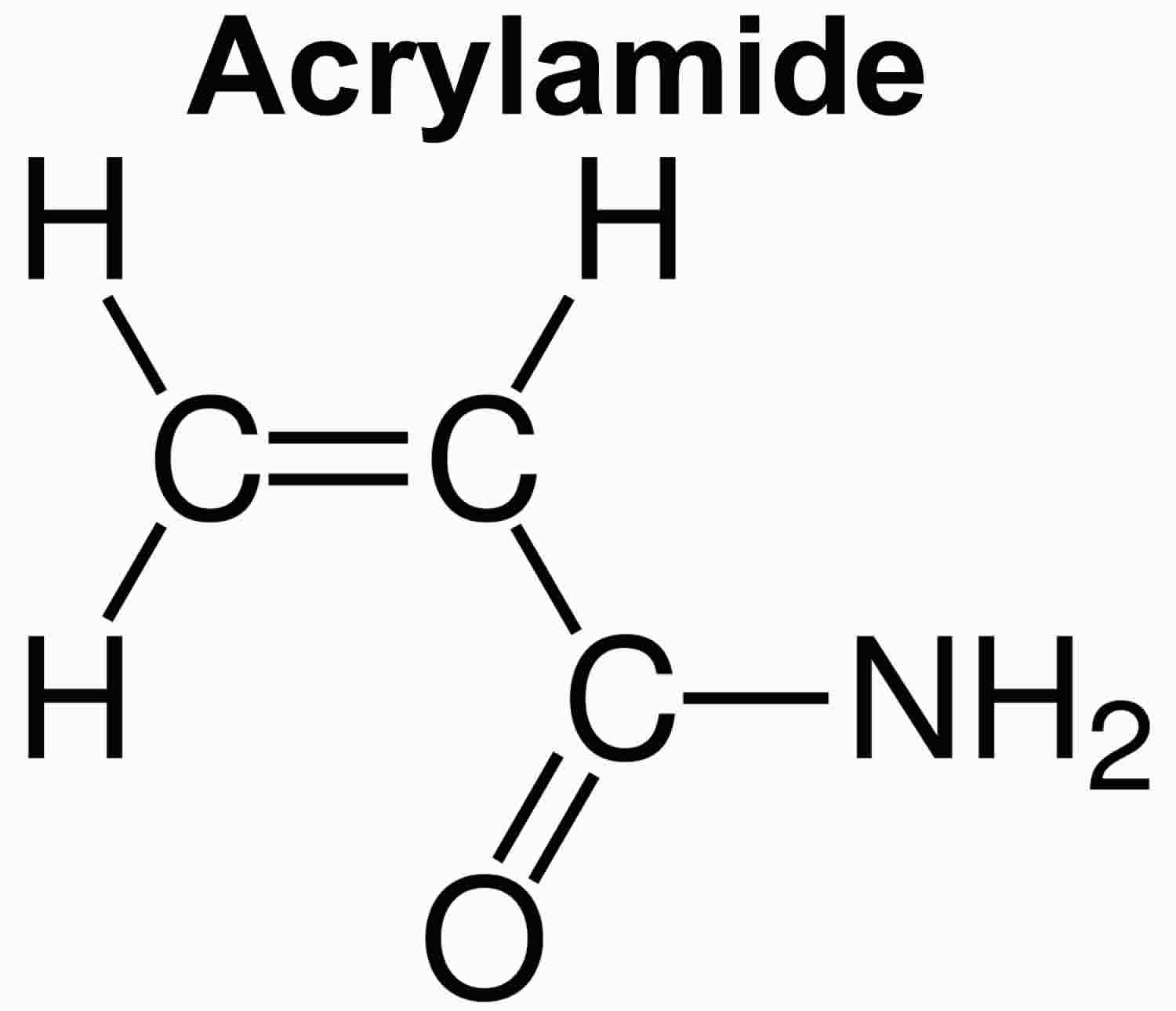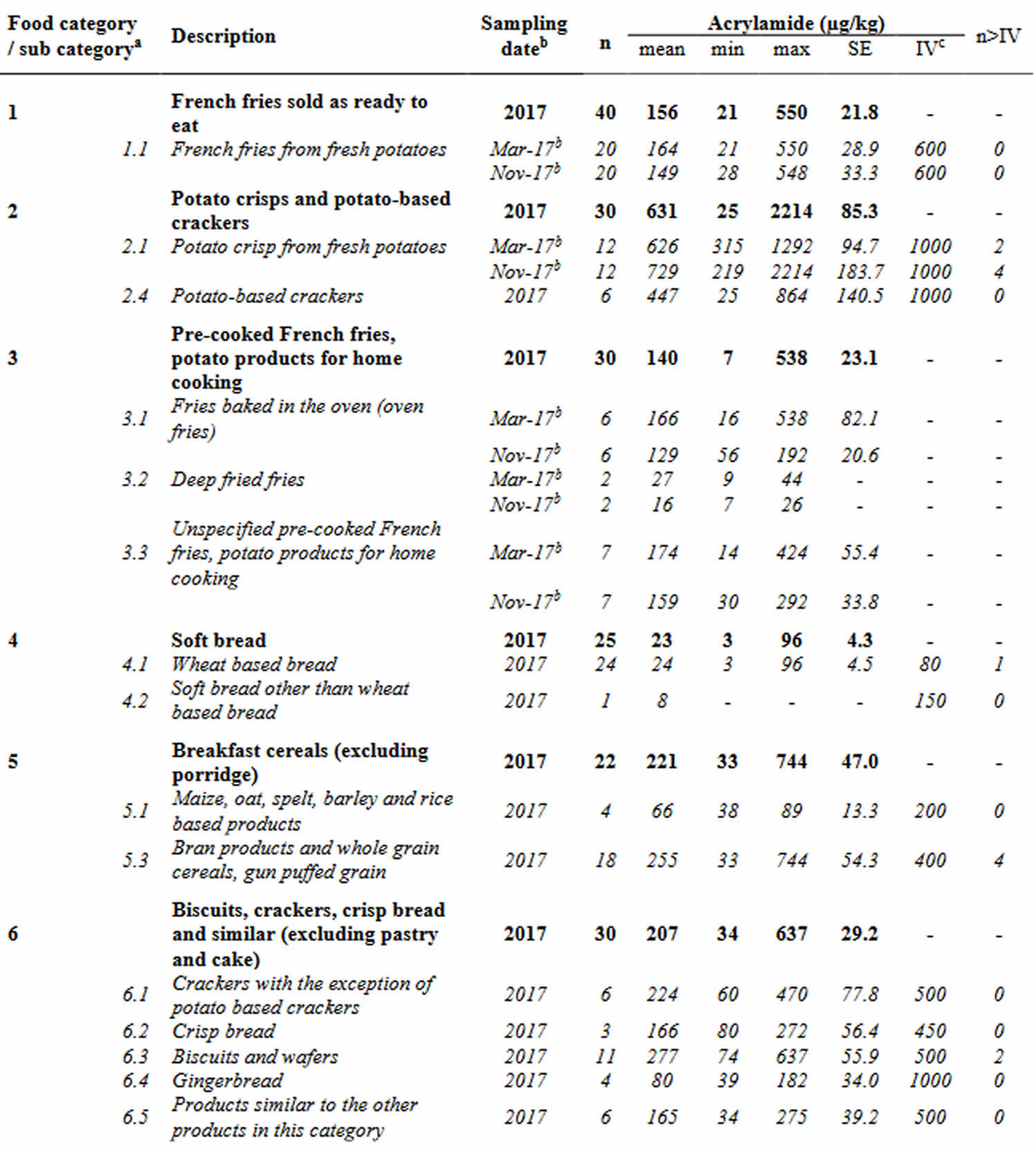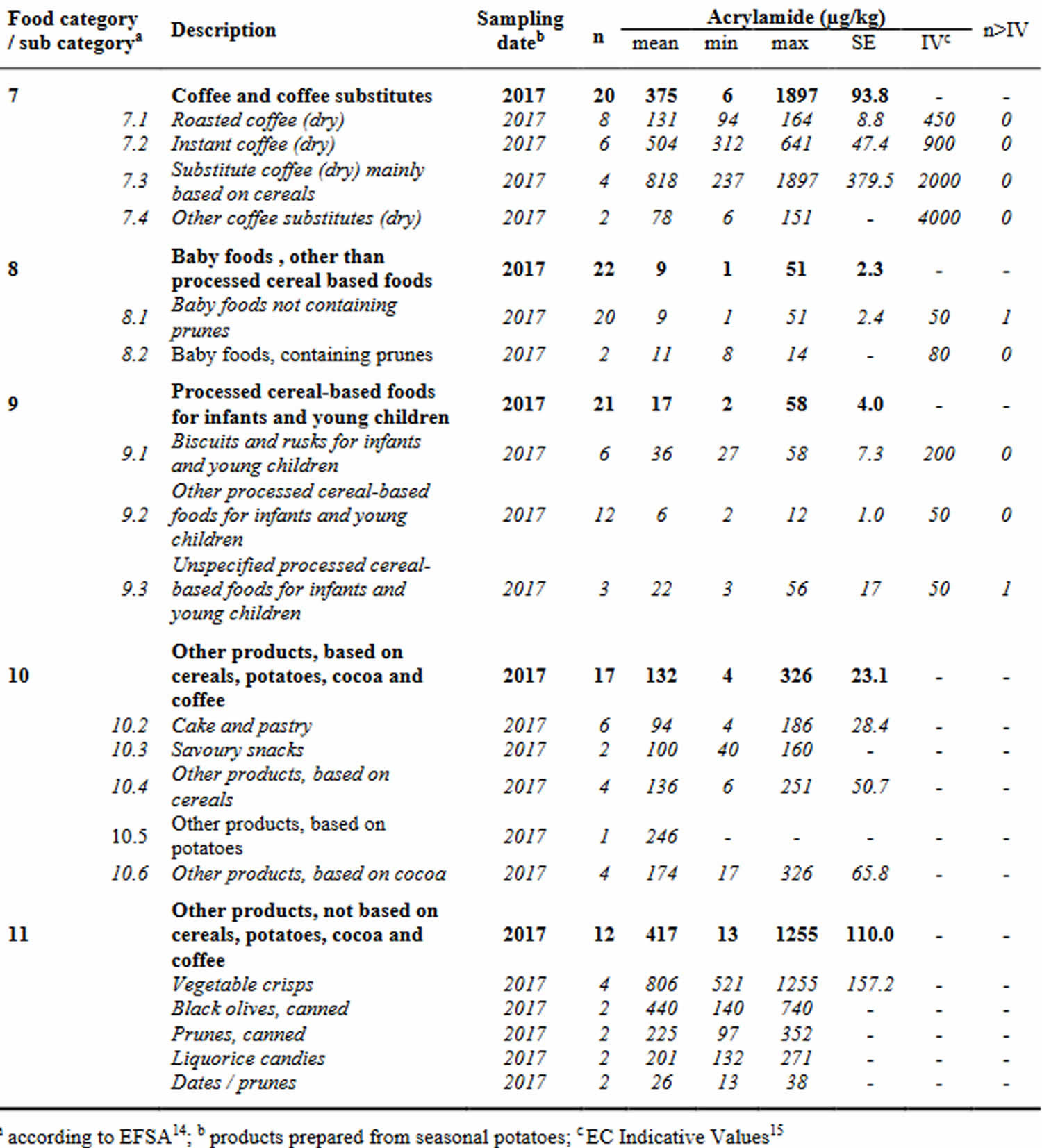Contents
- What is acrylamide
- How likely is acrylamide to cause cancer?
- How do people get exposed to acrylamide?
- How does acrylamide leave my body?
- How does acrylamide get into foods?
- What kinds of cooking lead to acrylamidae formation?
- How can I reduce my family’s exposure to acrylamide?
- How can acrylamide affect my health?
- How can acrylamide affect children?
- Is there a medical test to determine whether I’ve been exposed to acrylamide?
- Has the federal government made recommendations to protect human health?
- Acrylamide foods to avoid
- Acrylamide in food
What is acrylamide
Acrylamide is a chemical that can form in some foods during high-temperature cooking processes, such as frying, roasting, and baking. Acrylamide in food forms from sugars and an amino acid (asparagine) that are naturally present in food during certain types of high-temperature cooking, such as frying, roasting, and baking; acrylamide does not come from food packaging or the environment. Frying, baking, or roasting certain foods, such as potatoes or grains, can create acrylamide. French fries and potato chips, for example, may have measurable acrylamide levels. Acrylamide is also found in cigarette smoke.
Acrylamide is a chemical widely used to make polyacrylamide, which is mainly used in treating waste water discharge from water treatment plants and industrial processes. In addition, acrylamide and polyacrylamides are used in the production of dyes, industrial products and organic chemicals, contact lenses, cosmetics and toiletries, permanent-press fabrics, paper and textile production, pulp and paper production, ore processing, sugar refining, and as a chemical grouting agent and soil stabilizer for the construction of tunnels, sewers, wells and reservoirs.
Acrylamide caused cancer in animals in studies where animals were exposed to acrylamide at very high doses. In 2010, the Joint Food and Agriculture Organization/World Health Organization Expert Committee on Food Additives (JECFA) concluded that acrylamide is a human health concern, and suggested additional long-term studies. U.S. Food and Drug Administration (FDA) experts participated in the evaluation and provided data from new research studies on acrylamide risk.
Acrylamide Cancer Classification 1:
- United States Environmental Protection Agency (EPA): Likely to be carcinogenic to humans.
- International Agency for Research on Cancer (IARC): Probably carcinogenic to humans.
- National Toxicology Program (NTP): Reasonably anticipated to be a human carcinogen
The two-year National Toxicology Program (NTP studies of acrylamide, given in an animal’s drinking water, found clear evidence of carcinogenic activity in male and female rats and mice, based on tumors in multiple sites 2. For example, tumors were found in the mammary and thyroid glands in female rats, and the reproductive organs in male rats. Tumors of the lung were among those observed in mice. Additionally, NTP conducted parallel studies on glycidamide, which was also found to be a multisite carcinogen in both male and female rats and mice. The types of tumors induced by glycidamide were the same as those seen in acrylamide. Findings of clear evidence of carcinogenic activity in both sexes of rats and mice, and at multiple sites, is relatively uncommon and indicative of a strong carcinogenic response.
However, estimating the potential risks to humans, associated with dietary exposure to acrylamide, involves difficult analyses and judgments that are well beyond the intent of the National Toxicology Program (NTP) technical report 2.
Figure 1. Acrylamide chemical structure

How likely is acrylamide to cause cancer?
Acrylamide has caused several types of cancer in animals. Adequate human data are not available.
The Department of Health and Human Services (DHHS), the International Agency for Research on Cancer (IARC), and the EPA have concluded that acrylamide is likely to be carcinogenic to humans, based on sufficient evidence of cancer in animals.
Studies in rodent models have found that acrylamide exposure increases the risk for several types of cancer 3. In the body, acrylamide is converted to a compound called glycidamide, which causes mutations in and damage to DNA. However, a large number of epidemiologic studies (both case-control and cohort studies) in humans have found no consistent evidence that dietary acrylamide exposure is associated with the risk of any type of cancer 4. One reason for the inconsistent findings from human studies may be the difficulty in determining a person’s acrylamide intake based on their reported diet.
The National Toxicology Program’s (NTP) Report on Carcinogens considers acrylamide to be reasonably anticipated to be a human carcinogen, based on studies in laboratory animals given acrylamide in drinking water. However, toxicology studies have shown that humans and rodents not only absorb acrylamide at different rates, they metabolize it differently as well 5.
Studies of workplace exposure have shown that high levels of occupational acrylamide exposure (which occurs through inhalation) cause neurological damage, for example, among workers using acrylamide polymers to clarify water in coal preparation plants 6. However, studies of occupational exposure have not suggested increased risks of cancer 7.
Additional epidemiologic studies in which acrylamide adduct or metabolite levels are serially measured in the same individuals over time (longitudinal cohorts) are needed to help determine whether dietary acrylamide intakes are associated with increased cancer risks in people. It is also important to determine how acrylamide is formed during the cooking process and whether acrylamide is present in foods other than those already tested. This information will enable researchers to make more accurate and comprehensive estimates of dietary exposure. Biospecimen collections in cohort studies will provide an opportunity to examine biomarkers of exposure to acrylamide and its metabolites in relation to the subsequent risk of cancer.
How do people get exposed to acrylamide?
Food and cigarette smoke are the major sources of acrylamide exposure 8.
The major food sources of acrylamide are French fries and potato chips; crackers, bread, and cookies; breakfast cereals; canned black olives; prune juice; and coffee.
Acrylamide levels in food vary widely depending on the manufacturer, the cooking time, and the method and temperature of the cooking process 9. Decreasing cooking time to avoid heavy crisping or browning, blanching potatoes before frying, not storing potatoes in a refrigerator, and post-drying (drying in a hot air oven after frying) have been shown to decrease the acrylamide content of some foods 10.
People are exposed to substantially more acrylamide from tobacco smoke than from food. People who smoke have three to five times higher levels of acrylamide exposure markers in their blood than do non-smokers 11. Exposure from other sources is likely to be significantly less than that from food or smoking, but scientists do not yet have a complete understanding of all sources of exposure. Regulations are in place to limit exposure in workplaces where acrylamide may be present, such as industrial settings that use polyacrylamide and acrylamide copolymers.
How does acrylamide leave my body?
Once in your body, acrylamide enters your body fluids. Acrylamide and its breakdown products leave your body mostly through urine; small amounts may leave through feces, exhaled air, and breast milk.
How does acrylamide get into foods?
When certain foods are cooked at high temperatures, sugars, such as glucose and fructose, can react with the free amino acid, asparagine, to form acrylamide. Acrylamide forms as part of a chemical reaction, known as the Maillard reaction, which contributes to the aroma, taste, and color of cooked foods. Acrylamide is one of the hundreds of chemicals that can form during the Maillard reaction.
What kinds of cooking lead to acrylamidae formation?
High temperature cooking, such as frying, roasting, or baking, is most likely to cause acrylamide formation. Boiling and steaming do not typically form acrylamide. Acrylamide is found mainly in foods made from plants, such as potato products, grain products, or coffee. Acrylamide does not form, or forms at lower levels, in dairy, meat, and fish products. Generally, acrylamide is more likely to accumulate when cooking is done for longer periods or at higher temperatures.
How can I reduce my family’s exposure to acrylamide?
Adopt a healthy, balanced eating plan that includes fruits and vegetables, lean meats, fish, high-fiber grains, and beans.
Avoid eating a lot of carbohydrate-rich foods that are cooked at high temperatures (e.g., French fries). Foods with higher protein content appear to have lower amounts of acrylamide. Avoid overcooking foods.
Other tips:
- Fry foods at 170 degrees Celsius (338 degrees Fahrenheit) or lower.
- Cook potato strips, such as french fries, to a golden yellow rather than a golden brown color.
- Toast bread to the lightest color acceptable.
- Soak raw potato slices in water for 15-30 minutes before frying or roasting. Drain and blot dry before cooking.
- Do not store raw potatoes in the refrigerator. Storing raw potatoes in the fridge may lead to the formation of more free sugars in the potatoes, a process sometimes referred to as “cold sweetening”, and can increase overall acrylamide levels, especially if the potatoes are then fried, roasted or baked. Raw potatoes should ideally be stored in a dark, cool place at temperatures above 6 °C (42.8 °F).
- Acrylamide is a component of tobacco smoke. Avoid smoking in enclosed spaces like inside the home or car in order to limit exposure to children and other family members.
Of course, avoiding acrylamide all together will do you little good if you indulge in activities definitively known to increase cancer risk, such as:
- smoking
- drinking too much alcohol
- exposing your skin to excessive sunlight (or artificial sources of UV)
- regularly eating more than 90g of red or processed meat a day
You can reduce your cancer risk by:
- eating a healthy, balanced diet
- maintaining a healthy weight
- staying physically active
How can acrylamide affect my health?
The main targets of acrylamide toxicity are the nervous system and reproductive system.
Nervous system effects such as muscle weakness, numbness in hands and feet, sweating, unsteadiness, and clumsiness were reported in some acrylamide workers. However, most people are not exposed to acrylamide levels high enough to cause these effects.
Acrylamide reduces the ability of male animals to produce offspring and could cause similar effects in humans, but not likely at exposure levels experienced by most people.
How can acrylamide affect children?
Acrylamide is expected to affect children in the same manner as adults.
Acrylamide can cross the placenta and result in exposure to unborn children. It has also been detected in breast milk.
In animals exposed to acrylamide during pregnancy, offspring had decreased body weight, decreased startle responses, and decreased levels of some chemicals involved in transmission of brain signals.
There are no reports of acrylamide causing developmental effects in humans.
Is there a medical test to determine whether I’ve been exposed to acrylamide?
Acrylamide and its breakdown products can be measured in blood and urine. These measurements may be useful in estimating how much acrylamide has entered the body. However, assays to identify exposure to acrylamide are not readily available to clinicians.
Has the federal government made recommendations to protect human health?
The EPA has determined that the exposure to acrylamide in drinking water at concentrations of 1.5 milligrams per liter (1.5 mg/L) for one day or 0.3 milligrams per liter (0.3 mg/L) for 10 days is not expected to cause any adverse effects in a child.
The Occupational Safety and Health Administration (OSHA) has set an exposure limit of 0.3 milligrams per cubic meter (0.3 mg/m³) for acrylamide in workplace air for an 8-hour workday, 40-hour workweek.
The FDA has not suggested maximum recommended levels for acrylamide in various products at this time 12.
Acrylamide foods to avoid
Acrylamide is formed in foods that are rich in carbohydrates (particularly potatoes) when they are fried, grilled, or baked at normal cooking temperatures. Levels of acrylamide in these foods increase with higher temperatures and longer cooking times. Protein-based foods (such as meats) probably contain low amounts of acrylamide. Ingestion of foods that contain acrylamide is a primary source of exposure.
On April 24, 2002, researchers at the Swedish National Food Administration and Stockholm University reported finding the chemical acrylamide in a variety of fried and oven-baked foods. The initial Swedish research indicated that acrylamide formation is particularly associated with traditional high temperature cooking processes (temperatures exceeded 120 °C or 248 °F) for certain carbohydrate-rich foods. In response to concerns about the potential risk of foodborne acrylamide based on the known toxicity of acrylamide at much higher doses than those seen in foods, the U.S. Food and Drug Administration (FDA) began to analyze a variety of U.S. food products for acrylamide. The data presented below are results from analysis of composite food samples from FDA’s Total Diet Study. The Total Diet Study is FDA’s ongoing market basket survey in which approximately 280 core foods (Total Diet Study foods) in the U.S. food supply are collected and analyzed to determine levels of various contaminants and nutrients in those foods. Four market baskets are generally collected each year, one in each of four geographic regions of the U.S. (i.e., West, North Central, South, and Northeast). For each market basket, samples of each Total Diet Study food are collected from grocery stores and fast food restaurants in three cities within the region, prepared table-ready, and composited for analysis. Therefore, each data point for a contaminant or a nutrient represents the analytical result for a composite of three samples of the Total Diet Study food.
Acrylamide is a chemical substance formed when starchy foods, such as potatoes and bread, are cooked at high temperatures (above 120°C or 248 °F). Acrylamide can be formed when foods are:
- baked
- fried
- grilled
- toasted
- roasted
Acrylamide is not deliberately added to foods – it is a natural by-product of the cooking process and has always been present in our food.
Acrylamide is found in wide range of foods including:
- roasted potatoes and root vegetables
- chips
- crisps
- toast
- cakes
- biscuits
- cereals
- coffee, (i) roast coffee; (ii) instant (soluble) coffee
Acrylamide in food
Acrylamide is a low molecular weight, water soluble organic compoundwith industrial applications such as the production of polyacrylamides. In 2002 Swedish scientists discovered at acrylamide could form naturally during the preparation of (mostly) starchy foods as temperatures exceeded 120°C or 248 °F. Acrylamide isformed mainly from sugars and the amino acid asparagine, both of which are naturally present in foods. The chemical process that causes this occurs as a minor part of the so called Maillard Reaction; the Maillard Reaction is mainly responsible for the desirable color and taste of food. Although acrylamide does not occur in foods subjected to lower temperatures and relatively short process times e.g. boiled potatoes, it has been found in a wide range of home-cooked and processed foods, including, bread, coffee, crispbreads,French fries and potato crisps.
For the latest FDA’s acrylamide in food list please go here: https://www.fda.gov/Food/FoodborneIllnessContaminants/ChemicalContaminants/ucm053549.htm
Table 1. Summary of acrylamide concentrations in each food category/sub-category


- Acrylamide. https://www.atsdr.cdc.gov/substances/toxsubstance.asp?toxid=236[↩]
- https://www.niehs.nih.gov/health/assets/docs_a_e/acrylamide_508.pdf[↩][↩]
- National Toxicology Program. Toxicology and carcinogenesis studies of acrylamide (CASRN 79-06-1) in F344/N rats and B6C3F1 mice (feed and drinking water studies). National Toxicology Program technical report series 2012; (575):1-234.[↩]
- Virk-Baker MK, Nagy TR, Barnes S, Groopman J. Dietary acrylamide and human cancer: a systematic review of literature. Nutrition and Cancer 2014;66(5):774-790.[↩]
- Gargas ML, Kirman CR, Sweeney LM, Tardiff RG. Acrylamide: Consideration of species differences and nonlinear processes in estimating risk and safety for human ingestion. Food and chemical toxicology 2009; 47(4):760-768.[↩]
- Mulloy KB. Two case reports of neurological disease in coal mine preparation plant workers. American Journal of Industrial Medicine 1996; 30(1):56–61.[↩]
- Pelucchi C, La Vecchia C, Bosetti C, Boyle P, Boffetta P. Exposure to acrylamide and human cancer–a review and meta-analysis of epidemiologic studies. Annals of Oncology 2011; 22(7):1487-1499.[↩]
- Çebi A. Acrylamide Intake, Its Effects on Tissue and Cancer. In: Gökmen V, editor. Acrylamide in Food. Analysis, Content and Potential Health Effects. London: Academic Press, 2016.[↩]
- Tareke E, Rydberg P, Karlsson P, Eriksson S, Tornqvist M. Analysis of acrylamide, a carcinogen formed in heated foodstuffs. Journal of Agricultural and Food Chemistry 2002; 50(17):4998–5006[↩]
- Skog K, Viklund G, Olsson K, Sjoholm I. Acrylamide in home-prepared roasted potatoes. Molecular Nutrition and Food Research 2008; 52(3):307–312[↩]
- Virk-Baker MK, Nagy TR, Barnes S, Groopman J. Dietary acrylamide and human cancer: a systematic review of literature. Nutrition and Cancer 2014;66(5):774-790[↩]
- Guidance for Industry Acrylamide in Foods March 2016. https://www.fda.gov/downloads/Food/GuidanceRegulation/GuidanceDocumentsRegulatoryInformation/ChemicalContaminantsMetalsNaturalToxinsPesticides/UCM374534.pdf[↩]
- Survey of Acrylamide and Furansin UK Retail Products: Results for Samples Purchased Between January 2017 and November 2017. A report prepared for the Food Standards Agency March 2018. https://www.food.gov.uk/sites/default/files/media/document/Acrylamide%20Furans_Summary%20report%20(Jan%2017_Nov%2017).pdf[↩]





